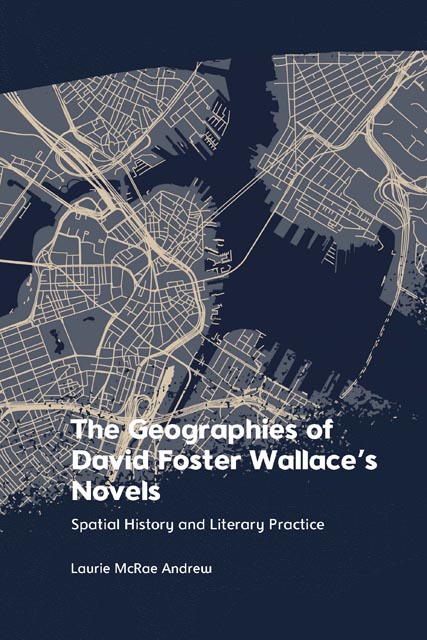Book contents
- Frontmatter
- Contents
- Acknowledgements
- Texts and Abbreviations
- Introduction
- 1 ‘This strange, occluded place’: Regional Geography, the Midwest and The Broom of the System
- 2 ‘Abroad in the urban night’ (I): Metropolis, ‘Postmetropolis’ and Infinite Jest
- 3 ‘Abroad in the urban night’ (II): Empathy, Community and the Image of the City in Infinite Jest
- 4 What is Peoria for? (I): Postindustrial Life and the Language of Place in The Pale King
- 5 What is Peoria for? (II): Peoria, the Edge City and The Pale King
- Bibliography
- Index
2 - ‘Abroad in the urban night’ (I): Metropolis, ‘Postmetropolis’ and Infinite Jest
Published online by Cambridge University Press: 13 April 2023
- Frontmatter
- Contents
- Acknowledgements
- Texts and Abbreviations
- Introduction
- 1 ‘This strange, occluded place’: Regional Geography, the Midwest and The Broom of the System
- 2 ‘Abroad in the urban night’ (I): Metropolis, ‘Postmetropolis’ and Infinite Jest
- 3 ‘Abroad in the urban night’ (II): Empathy, Community and the Image of the City in Infinite Jest
- 4 What is Peoria for? (I): Postindustrial Life and the Language of Place in The Pale King
- 5 What is Peoria for? (II): Peoria, the Edge City and The Pale King
- Bibliography
- Index
Summary
Introduction: Infinite Jest, Boston and the ‘city novel’
If the Midwest, and notions of regional identity, had structured the geographies of Broom, Wallace’s move to Boston in 1989 entailed a shift in focus: having been concerned with the construction of a regional ‘heartland’ city in his first novel, he would now set Infinite Jest in and around one of America’s oldest and largest cities. But the depth of Wallace’s engagement with Cleveland and its topographical history in the earlier novel indicates that Boston might well have presented Wallace with more than simply a setting for this next project. How did this city shape Wallace’s approach to his novel? Can Jest be placed in a particular moment in the history of Boston – and of the American metropolis, and the literary and cultural attitudes associated with it? And what might a reading attentive to this geography tell us about Wallace’s relationship to the context of social and economic change in late twentieth-century America?
At first glance, these might seem counterintuitive questions to ask of Jest. Description of the cityscape is sparse: there is no direct glimpse of the exterior geography of the city until page 85, when Tiny Ewell makes a brief journey through Watertown by taxi (Jest pp. 85–7). Narrative action which takes place in the exterior spaces of the city is also limited to a relatively small number of scenes: of the 981 pages of the novel’s main text (excluding endnotes), only around 139 are set in Boston’s streets and public spaces. It is not often in this sprawling text that we find ourselves, like Randy Lenz, ‘abroad in the urban night’ (p. 539). By contrast, the Enfield Tennis Academy (‘E.T.A.’) and Ennet House – the novel’s two dominant institutions – take up a combined total of approximately 507 pages. The novel’s long final chapter, meanwhile, is organised around situations of interiority and stasis, with Hal Incandenza and Don Gately in parallel states of horizontal motionlessness within the confines of E.T.A. and St Elizabeth’s Hospital; the city almost entirely absent, apart from the occasional glimpse. (I refer, here and in the following chapter, to the parts of the text separated by circular figures as ‘chapters’. There are twenty-eight of these, though they are not numbered in the text).
- Type
- Chapter
- Information
- The Geographies of David Foster Wallace's NovelsSpatial History and Literary Practice, pp. 65 - 103Publisher: Edinburgh University PressPrint publication year: 2022



